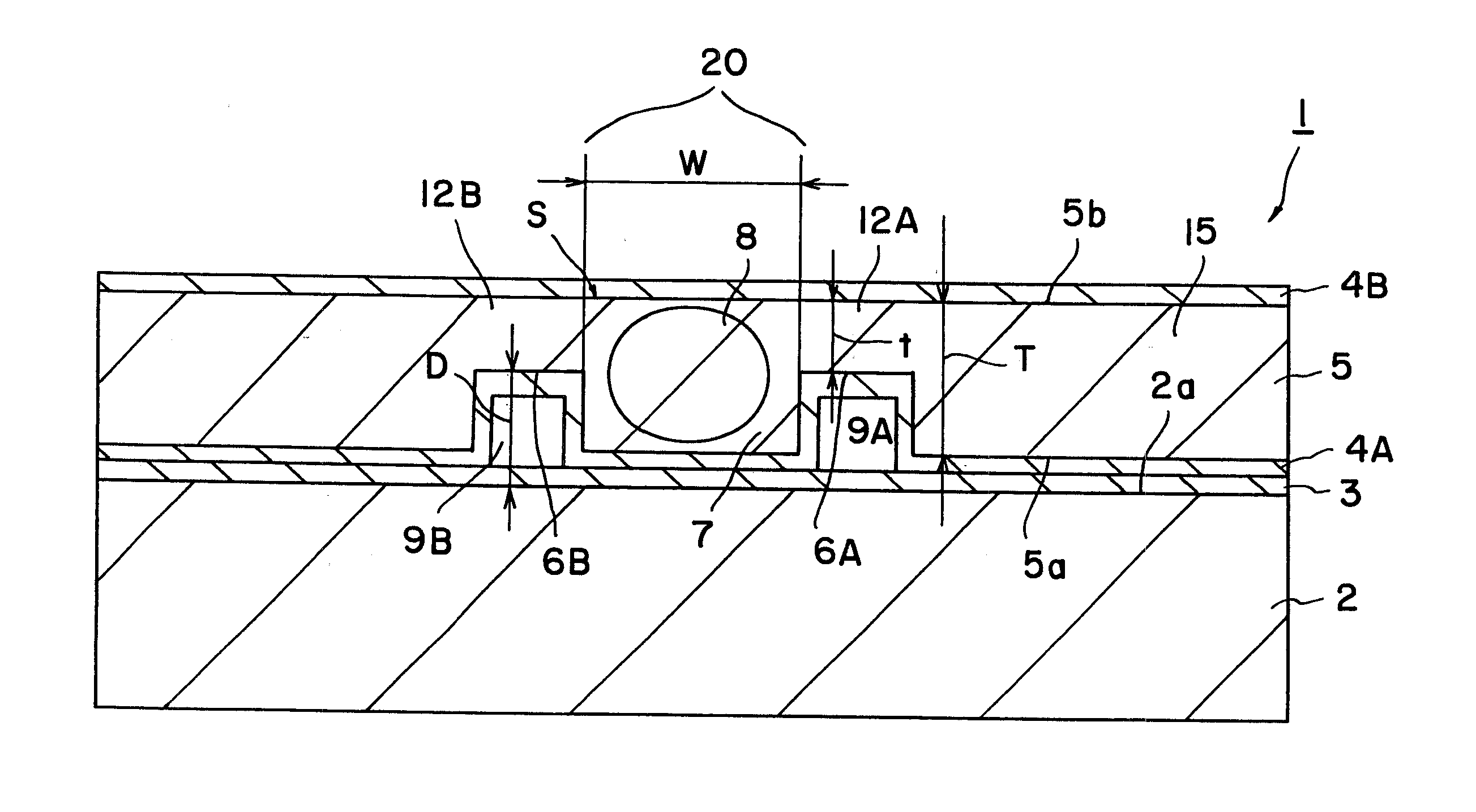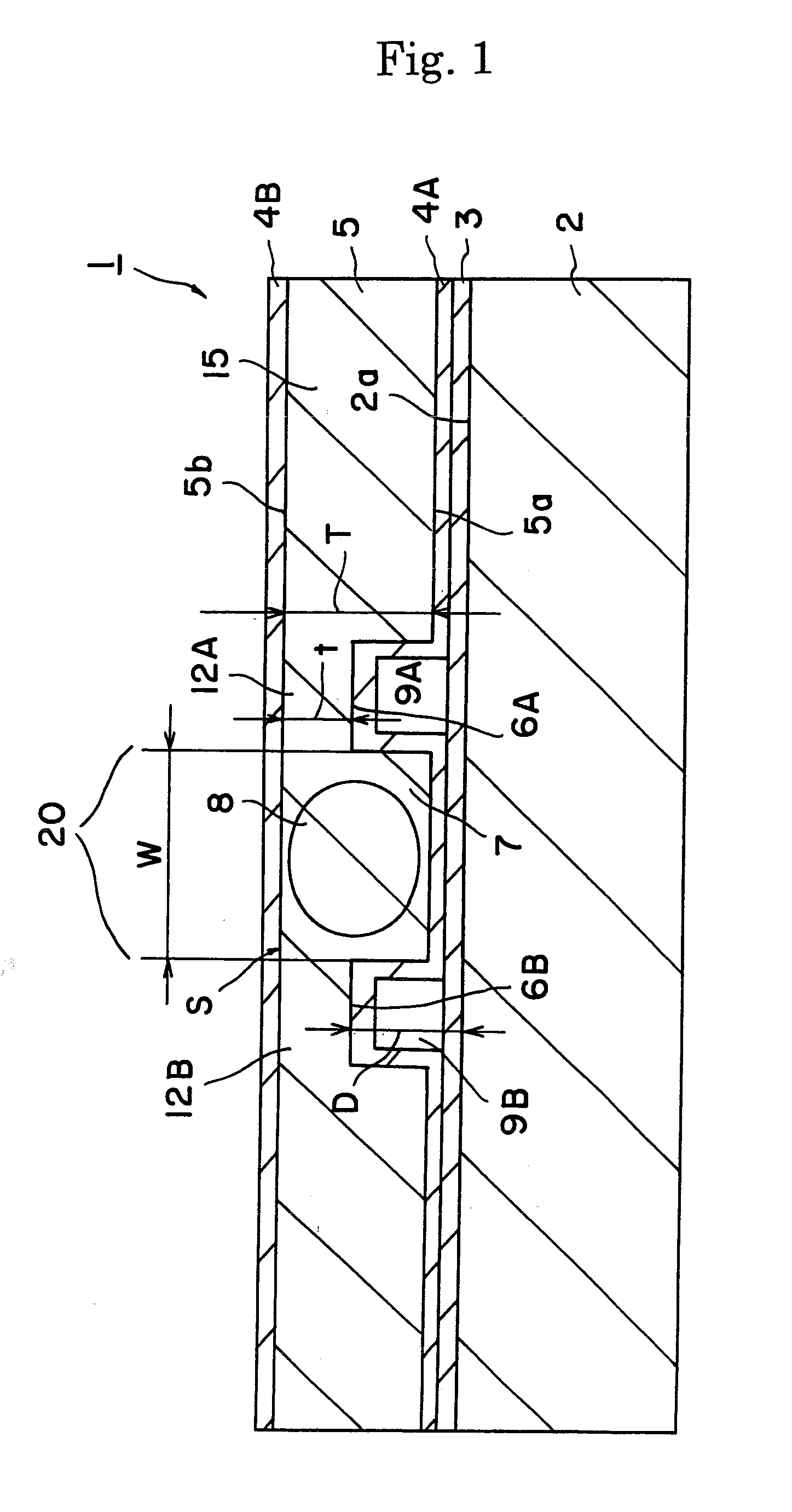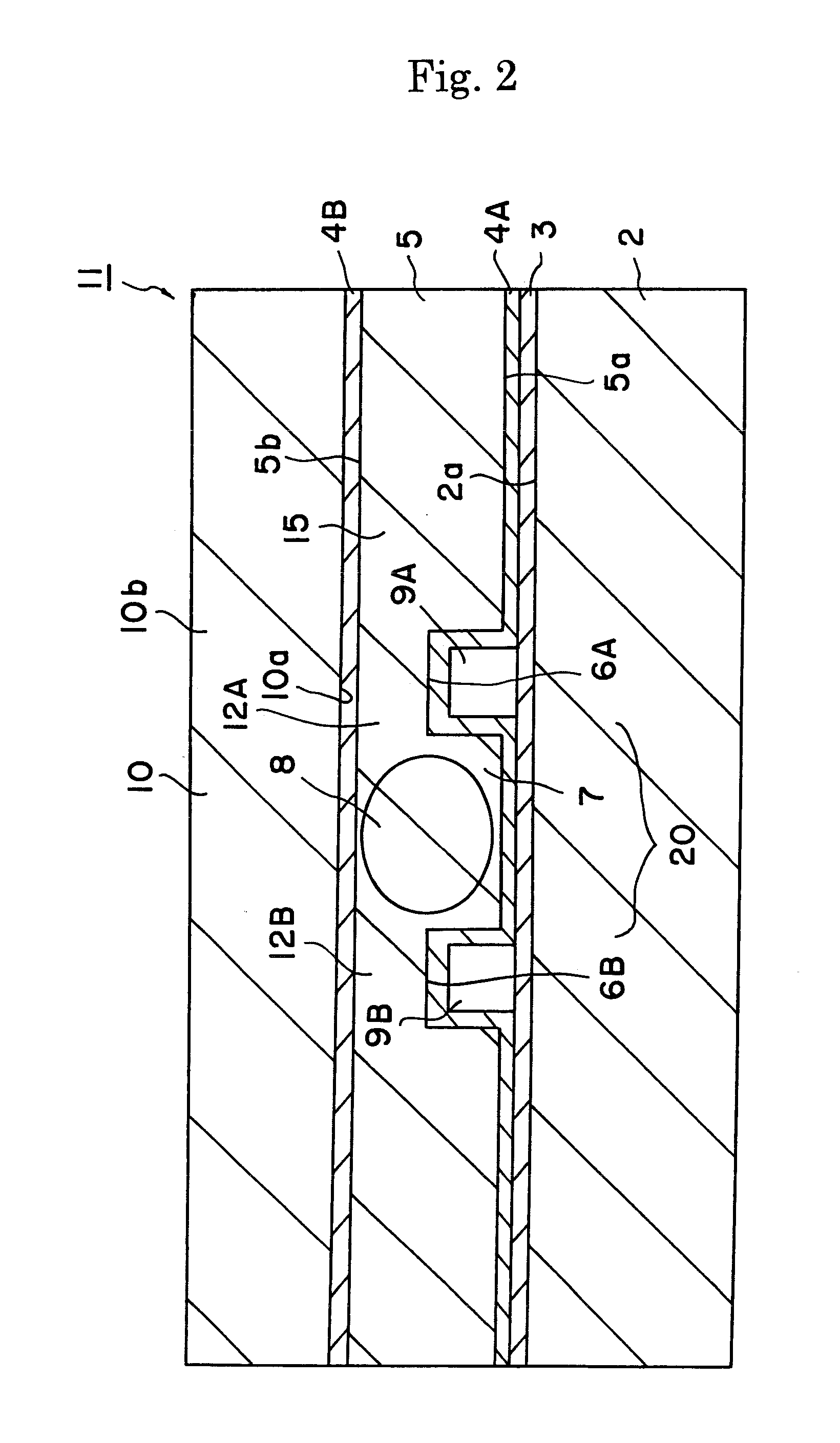Wavelength converting devices
a conversion device and wavelength technology, applied in the direction of instruments, light demodulation, optical waveguide light guides, etc., can solve the problems of limiting the resistance of material forming periodic polarization inversion structures to resist optical damage, unable to oscillate converted light of a high output power of, for example, 1 w or more, and unable to achieve high output power. , to achieve the effect of limiting the conversion efficiency of fundamental light to harmonic wave, and reducing the output power ratio ratio
- Summary
- Abstract
- Description
- Claims
- Application Information
AI Technical Summary
Benefits of technology
Problems solved by technology
Method used
Image
Examples
example 1
[0059] The device 1 described referring to FIG. 1 was produced.
[0060] Specifically, periodic polarization domain inversion structure having a period of 6.54 μm was produced in a Z-cut substrate having a thickness of 500 μm and made of MgO-doped lithium niobate. SiO2 film having a thickness of 0.5 μm was formed thereon by sputtering. Further, Mo film of a thickness of 0.5 μg / m was formed by sputtering and then patterned to produce an etching mask. Wet etching was then performed in a fluoric acid solution heated at 60° C. to form the grooves 6A and 6B. The depth “D” of the groove was 20 μm and the distance between the grooves was 50 μm.
[0061] An adhesive was applied on the substrate 2 having a thickness of 1 mm and made of non-doped lithium niobate. The substrate 2 was then adhered to the above substrate 5 of MgO-doped lithium niobate. The surface 5b of the substrate 5 of MgO-doped lithium niobate was removed by grinding and polishing to a thickness of 50 μm. SiO2 film 4B having a t...
example 2
[0063] The device 1 described referring to FIG. 1 was produced.
[0064] Periodic polarization domain inversion structure having a period of 6.54 μm was produced in a Z-cut substrate having a thickness of 500 μm and made of MgO-doped lithium niobate. SiO2 film having a thickness of 0.5 μm was formed by sputtering. Further, Mo film of a thickness of 0.5 μm was formed by sputtering and then patterned to produce an etching mask. Wet etching was then performed in a fluoric acid solution heated at 60° C. to form the grooves 6A and 6B. The depth “D” of the groove was 5 μm and the distance between the grooves was 100 μm.
[0065] An adhesive was applied on the substrate 2 having a thickness of 1 mm and made of non-doped lithium niobate. The substrate 2 was then adhered to the above substrate 5 of MgO-doped lithium niobate. The surface 5b of the substrate 5 of MgO-doped lithium niobate was removed by grinding and polishing to a thickness of 10, m. Ta2O5 film 4B having a thickness of 0.5 μm was ...
PUM
 Login to View More
Login to View More Abstract
Description
Claims
Application Information
 Login to View More
Login to View More - R&D
- Intellectual Property
- Life Sciences
- Materials
- Tech Scout
- Unparalleled Data Quality
- Higher Quality Content
- 60% Fewer Hallucinations
Browse by: Latest US Patents, China's latest patents, Technical Efficacy Thesaurus, Application Domain, Technology Topic, Popular Technical Reports.
© 2025 PatSnap. All rights reserved.Legal|Privacy policy|Modern Slavery Act Transparency Statement|Sitemap|About US| Contact US: help@patsnap.com



